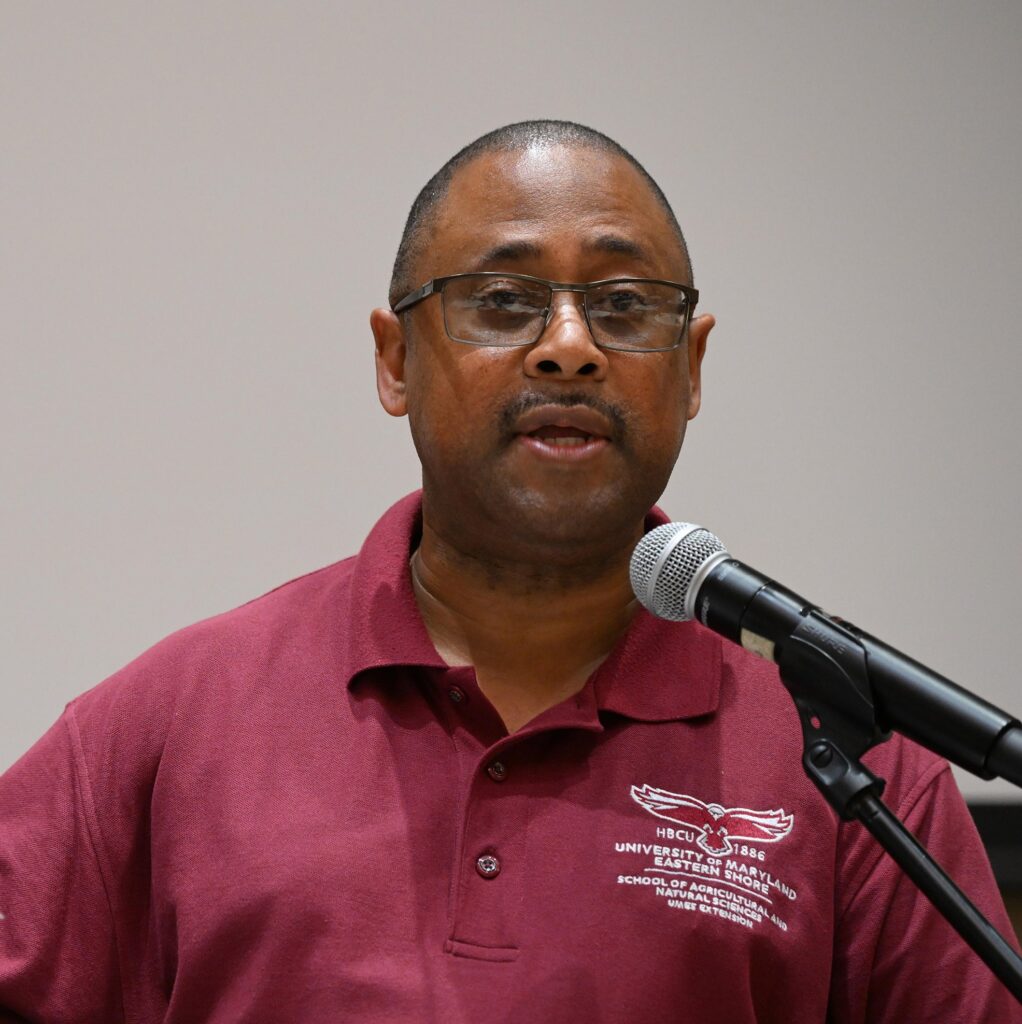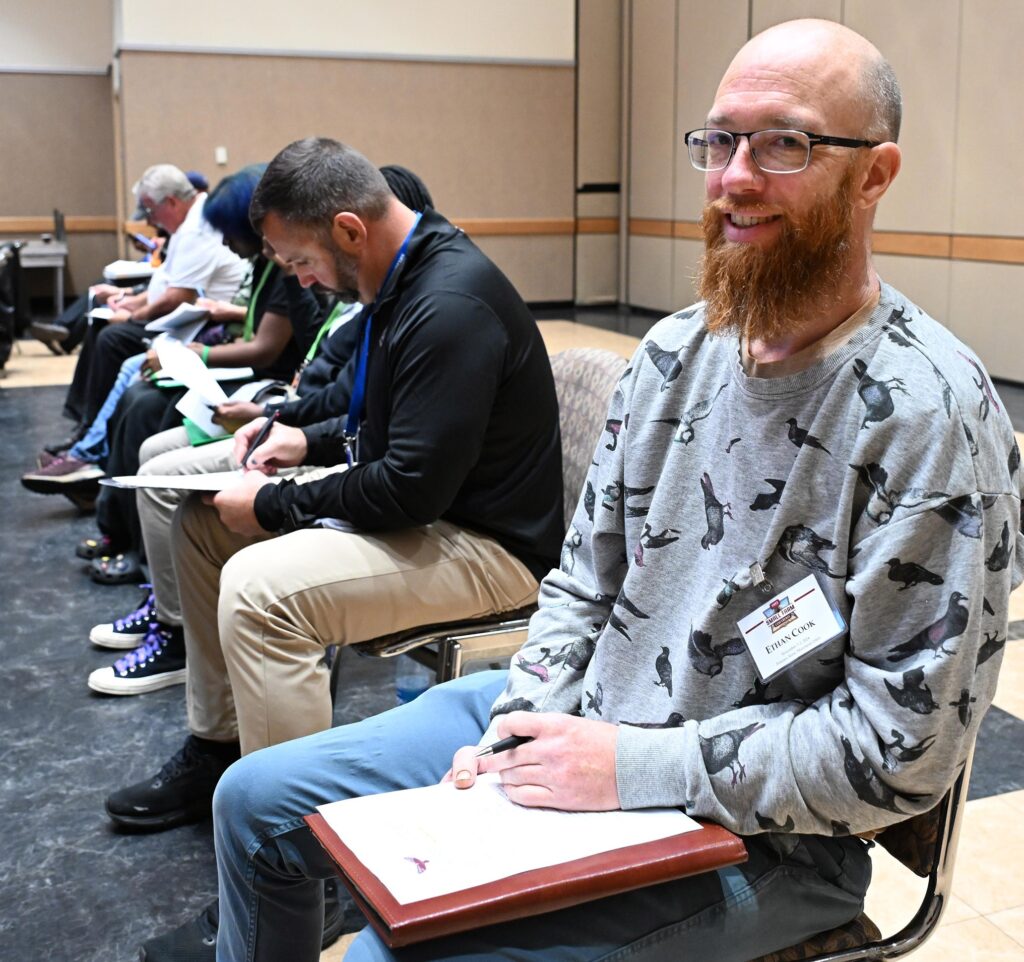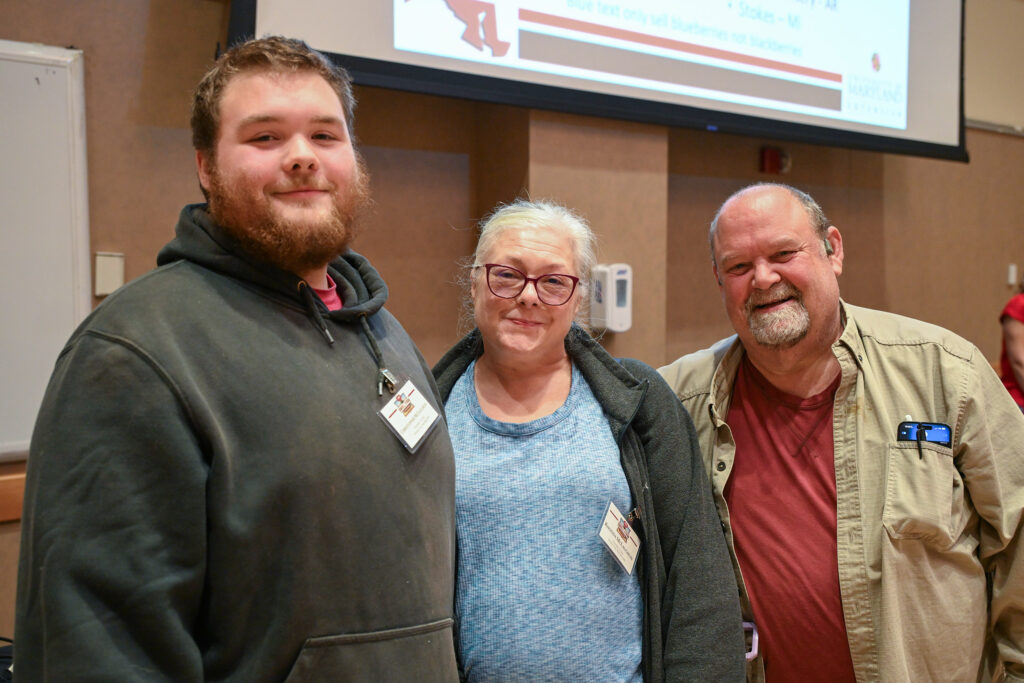
A record drought this fall has area farmers looking for ways to remain viable in the ever-challenging agricultural industry, one of the top economic drivers on the Eastern Shore and in Maryland. The University of Maryland Eastern Shore’s iconic Student Services Center was abuzz Nov. 1-2 with more than 200 agricultural stakeholders seeking solutions, ideas and opportunities.

“Positioning Farmers for Success,” the theme of the university’s 21st annual Small Farm Conference, hit the proverbial nail on the head with informational sessions, hands-on workshops, speakers and off-site bus tours designed to give farmers practical, research-based and shared knowledge to apply to their agribusinesses.
“This event has never been more relevant than this year as a means of connecting farmers to university and partner resources, researchers and extension educators, entrepreneurs and agritourism operators,” said Berran Rogers Jr., (right) coordinator of the Small Farm Program at UMES and event chair.

Attendees ranged from beginning farmers to those looking to transition their farms to the next generation. They explored high-value alternative crops like berries, mushrooms, pawpaws, cut flowers, callaloo, jute and hibiscus. Agribusiness topics covered ground-up sustainability for beginning farmers, cooperative farming and transitioning to agritourism to diversify farm profitability. Beekeeping and pest management provided insight into pollinating and protecting plants.

“There is strength in community. This gathering in the spirit of cooperation, innovation and resilience exemplifies a powerful network of sustainable agricultural producers capable of feeding the nation,” Dr. Moses T. Kairo, (left) dean of UMES’ School of Agricultural and Natural Sciences, said during a welcome address. “Each of you play a critical role in finding solutions, exploring best practices and shaping the future of small farm production.”
First-time attendee Ethan Cook (right) came in part to take advantage of the in-person SNAP vendor application. The proprietor of Round Stone Farm in Cambridge, Maryland, a quarter-acre permaculture farm, sat in on the berry production session for blueberry cultivation know-how. Repeat attendee Peggy Scarborough of Accomack County, Virginia, however, was looking to network, hone best growing practices and to “learn how to farm different crops.”

Small fruits, non-traditional agriculture and business aspects were among the things Jasmine Bestul-Taylor, (far left) owner of a micro-farm in Prince George’s County, Maryland, was keen on taking away from the event.
“There is a lot of information you can find online, but it’s nicer to talk to a person to walk you through steps, ask questions and have a contact for later,” Bestul-Taylor said.

Michael and Rhonda McLaughlin, (right) grain farmers from Caroline County, Maryland, attended with their son, Christopher, an aspiring farmer.
“We’re branching out into something new like value-added crops for diversification,” Michael McLaughlin said. “We personally believe in feeding people and aim to partner with SNAP and the Maryland Food Bank to provide healthy foods.”
The Small Farm Conference sees changes in the makeup of its attendees each year, Kairo noted.
“One of the most important aspects that remains is that it is continuous, providing innovative information that growers can apply to their farming operations,” he said.
Click HERE for event photo gallery.
Gail Stephens, agricultural communications and media associate, University of Maryland Eastern Shore, School of Agricultural and Natural Sciences, UMES Extension, gcstephens@umes.edu., 410-621-3850.
Photo by Todd Dudek, agricultural communications, University of Maryland Eastern Shore, School of Agricultural and Natural Sciences, UMES Extension, tdudek@umes.edu.

